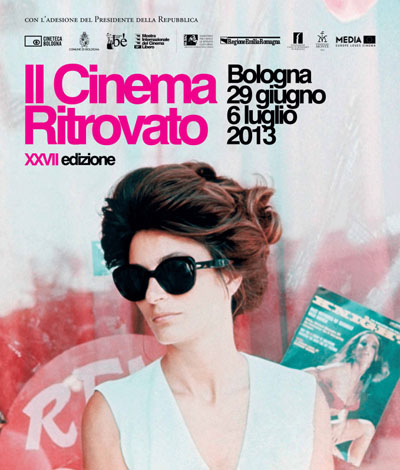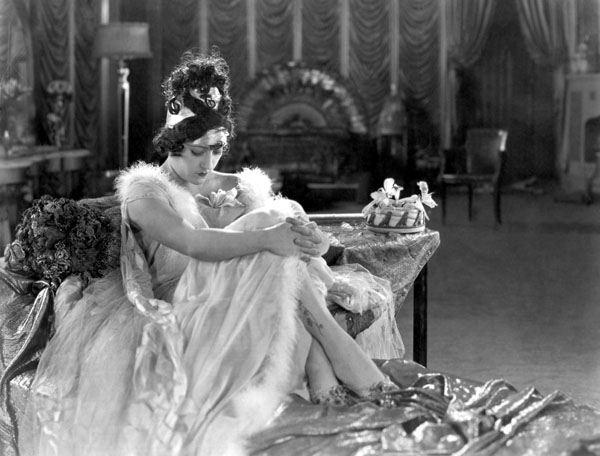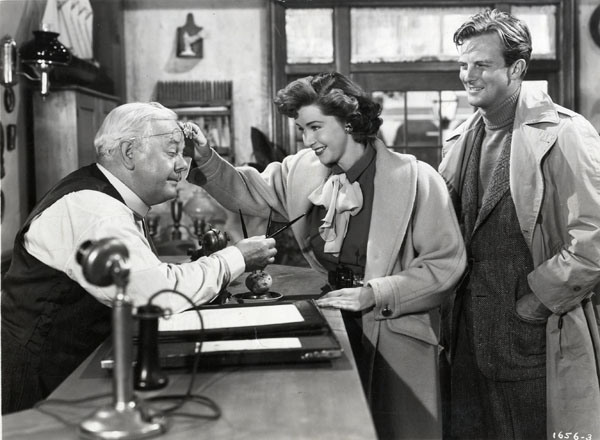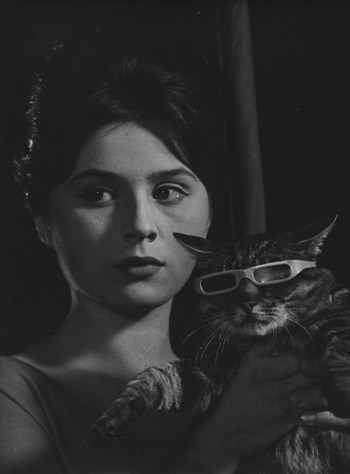This year’s just-wrapped edition of Il Cinema Ritrovato, the 27th, featured programs focusing on the work of Allan Dwan, Jerry Lewis, and Vittorio De Sica, celebrations of the year 1913 and European CinemaScope, and an extension of the festival’s long-running research project on the life and work of Charlie Chaplin. And that’s just scratching the surface. For the Hollywood Reporter, Clarence Tsui has interviewed Peter von Bagh, the “Finnish filmmaker-archivist-scholar” who’s been the artistic director now for 13 years. “The best DVD companies are doing the same kind of job that we are doing,” says von Bagh. “[T]hey are doing exactly the job that film archives should be doing.” But: “Europe is very poor and European archives don’t have the money to do real restorations.”
Von Bagh also chairs the jury that presents the festival’s annual DVD awards. The other jurors are Lorenzo Codelli, Alexander Horwath, Mark McElhatten, Paolo Mereghetti, and Jonathan Rosenbaum, who’s posted the full, annotated list of winners: “Because we were faced this year with an embarrassment of riches, we adopted a few new procedures. Apart from creating three new categories for awards, we more generally selected eleven separate releases that we especially valued and only afterwards selected particular categories for each of our choices.” Among the winners are presentations of work by Michael Snow, Nicholas Ray, Pere Portabella, Jacques Rivette, and Paul Fejos.
Photogénie has been posting extensive dispatches from the festival, beginning, as noted a few days ago, with Bart Versteirt‘s opener, followed by notes on his second and third days in Bologna. Tom Paulus began with Paul Martin’s Glückskinder (1936), “a German spin on the American screwball newspaper picture,” and Max Ophüls’s Sans Lendemain (1940), “further proof, if we needed any, of the director’s genius,” before throwing himself with abandon into the Dwan program. For which we can be thankful. Here he is, for example, on the Dwan’s 1954 western, Silver Lode:
Like Fritz Lang’s Fury, Silver Lode traces the building of mass consensus around the creation of a scapegoat. But other than Lang and more along the lines of the Ford of the Judge Priest movies, Dwan does not show the town people as the masses from which fascism is born but, on the contrary, as a functioning social network of largely friendly relations that can go sour when its shared moral sense is disturbed by fascist forces; that is when a extraordinary human being steps in to remind them of their moral duties. Such allegories of American democracy are common to many westerns, particularly those focused on the threat of mob justice, like Wellman’s The Ox-Bow Incident. But allegory is saved from heavy-handedness here by Dwan’s pulpy energy, perhaps most fully incarnated by John Payne’s perfect movie-performance. No middle-brow message picture this, but pure “termite art,” Manny Farber’s term for art aspiring to nothing else than the display of “eager, industrious, unkempt activity.”
In that same entry, Paulus has notes on Dwan’s early work for the “Flying A” American Pictures Company, films made in 1910, 1911, and 1912. Opening his second entry, he notes that we can watch Kevin Brownlow‘s talk on Dwan, a recollection of the film historian’s meeting with the then-93-year-old director for the 1980 documentary series Hollywood (and there are clips of that interview as well, some of them previously unseen by anyone but Brownlow and his team). Paulus then discusses two Dwan films featuring Gloria Swanson, Zaza (1923) and Manhandled (1924), both “fresh, lively entertainments.”
In his third entry, Paulus offers some historical background on Dwan’s “adaptations of successful stage farces,” Up in Mabel’s Room (1944), Getting Gertie’s Garter (1945) and Brewster’s Millions (1945). “Dwan told Peter Bogdanovich that these comedies were his contribution to the war effort, pure escapism for a weary and anxious audience. But much better are Dwan’s actual war pictures, two comedies he made for another independent company, Herbert Yates’s Republic Pictures, shortly after the war. Both Rendezvous with Annie (1946) and The Inside Story (1948) retain the energy of the farces and stick to the genre’s traditional elements: the quiproquo of mistaken identity, the endless chain of coincidence and the frantic attempt to elude discovery.”
Also at Photogénie, Anke Brouwers considers two early talkies by Mikio Naruse, Wife, Be Like a Rose, “truly a classic,” and Five Men in the Circus, both made in 1935. Of the latter, she writes, “Naruse’s low camera angles, his frequent cutting between singles, two-shots, or more distant framings show us different sides of the characters in space (a little dance, someone said to me) as well as the different perspectives on the hard choices or facts of life they are facing. As in real life the film offers no conclusion, but instead just reflects on the bends and forks in the road and on its protagonists, forever on the move.”
More from Bologna: We’ve already noted that Meredith Brody‘s taken plenty of notes on von Bagh’s conversation with Alexander Payne, but she’s followed up with two more entries at Thompson on Hollywood. In the first, she writes about Chaplin, Ophüls, and De Sica; in the second, there’s yet more on Allan Dwan! Meantime, and again, as noted earlier, Lukas Foerster‘s posted two dispatches in English.
Updates, 7/21: “Faced with so many options, one could only focus on a few of the bounteous threads of programming,” writes Kristin Thompson at the top of her report. “I opted to see as many of the early Japanese sound films as possible, the early (pre-mid-1960s) Chris Marker works, and the annual Cento Anni Fa series, this year presenting a sampling of films from 1913, the year when worldwide the cinema seemed to take an extraordinary leap forward in complexity and inventiveness.”
Genevieve Yue, writing for Film Comment, highlights Agnès Varda’s La Pointe Courte (1955), Chris Marker’s Olympia 52 (1952), Sadao Yamanaka’s Kochiyama Soshun (1935), Mikio Naruse’s Five Men from the Circus (1935), Vincenzo Denizot’s Tigris (1913), Victor Sjöström’s Ingeborg Holm (1913), Jackie Raynal’s Deux Fois (1968), Marlen Khutsiyev’s July Rain (1966), and of course, lots of Allan Dwan.
Writing for Cinema Scope, Celluloid Liberation Front concentrates on Věra Chytilová’s Daisies (1966), Vojtéch Jasny’s The Cassandra Cat (1963), Roberto Rossellini’s Rome Open City (1945), Marc Scialom’s Lettre á la prison (1969-70), and a dash of Dwan.
And Lukas Foerster‘s rated the dozens of films he saw during the festival.
For news and tips throughout the day every day, follow @KeyframeDaily on Twitter and/or the RSS feed. Get Keyframe Daily in your inbox by signing in at fandor.com/daily.







